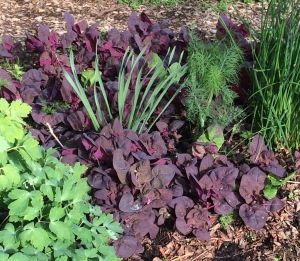Creamy Cauliflower Soup
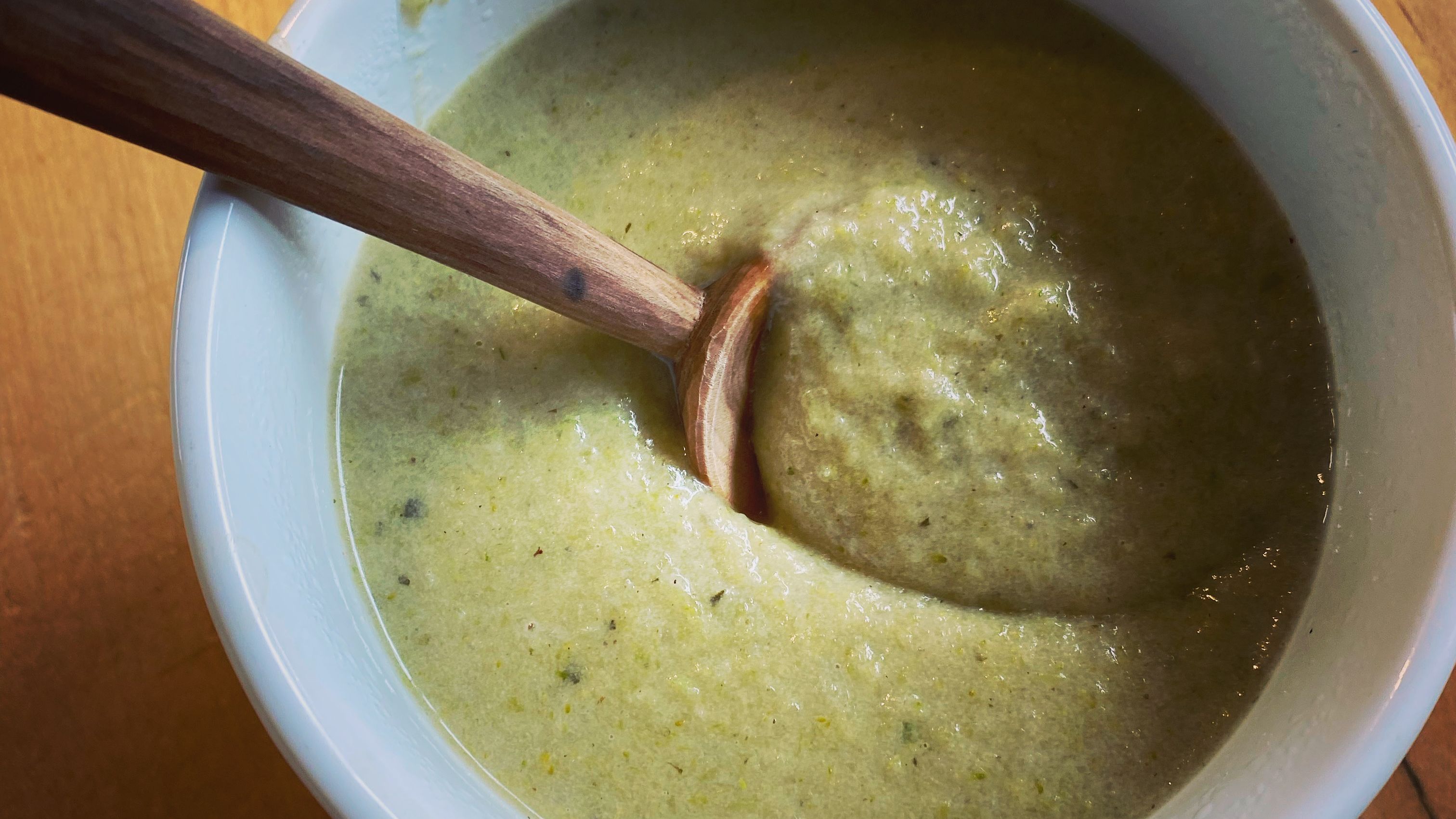
This soup is perfect for a chilly spring day. It could be made from perennial walking onions or leeks overwintered in your garden instead of the onions. And don't forget to leave some parsnips in your garden in the fall to dig out fresh in the spring!
Creamy Cauliflower Soup
Ingredients
- ¼ cup butter
- 1 onion, diced
- 1 parsnip, diced (optional)
- ¼ cup flour
- 2-3 cups bone broth
- 2 cups milk
- 1 pound fresh or frozen cauliflower (or broccoli)
- 1 teaspoon thyme salt (or regular salt + fresh or dried thyme)
- A few scrapings of nutmeg
Directions:
Melt butter in a medium pot over medium heat. Add onions and parsnip and cook until softened. Add flour and cook about 1 minute, stirring constantly. Add broth and milk and bring to a simmer. Cook until slightly thickened, about 5 minutes, stirring occasionally. Add salt and nutmeg. Add cauliflower and simmer 5-10 minutes until thawed (if frozen) or cooked through (if fresh). Blend and serve. Add more broth or milk if it gets too thick.
Freezer Season

We are having a super cold, late spring here in South-central Alaska, which makes me think of baking. I SHOULD be cleaning out the freezer, though, so why not do both? This morning I made a blueberry coffee cake, and while taking out the blueberries, I noticed I still have 3 more packages of zucchini in there! Score!
Last weekend I made this chocolate zucchini cake for a friend's birthday and it was the hit of the party. One person said it was the only chocolate cake they like because it's not too sweet. It actually uses less than half of the sugar called for in the original recipe, and it's perfect!
So here's the recipe! If you are bummed out about all the snow, this is guaranteed to lift your spirits.
If you don't have frozen zucchini, you can plan some for next year. Now is the time to start your zucchini in 3 or 4 inch pots. Plant 2 seeds per pot, and thin them down one!. These guys DO NOT like to have their roots disturbed and will not produce well if they are crowded. Transplant them to your garden at the end of the month.
To freeze the zucchini, I let them get a little bigger and then shred them in the food processor. Then I just pack them into freezer ziplocks and freeze. No blanching or other processing required.
Who can guess what kind of fish this is?
Chocolate Zucchini Cake
Dry Ingredients:
- 2 cups flour
- ½ cup cocoa powder
- 2 teaspoons baking soda
- 1 teaspoon baking powder
- ½ teaspoon salt
Wet Ingredients
- 4 eggs
- ¾ cup sugar
- ¾ cup co...
Reduce Plastic Use (Granola Bar Recipe!)
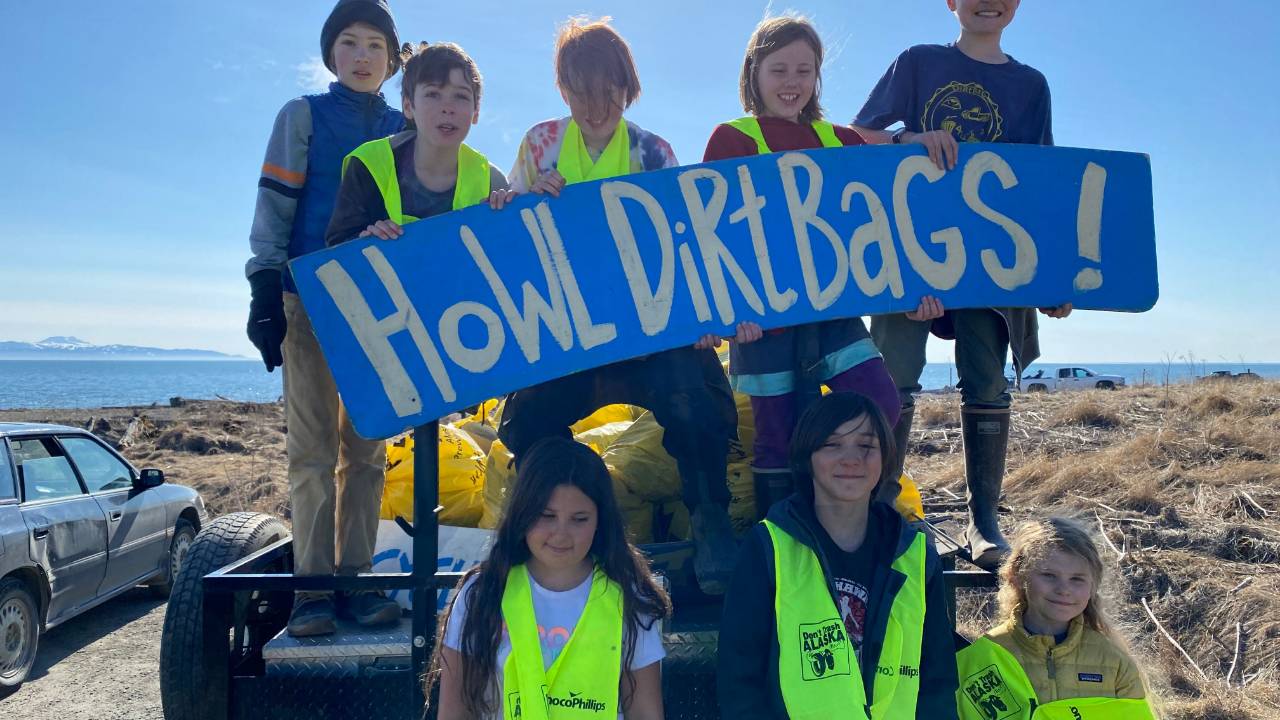
This week we've been participating in a community trash pickup with HoWL, Homer Wilderness Leaders.
It was so fun to work together with other youth to tackle this dirty job. There is really something magical about working with people towards a common goal that unites you together, and I think we all made some wonderful friends this week.
It was deeply satisfying to be taking action for our earth and community. So often we may think about or talk about what could be better, but actually doing something is so empowering.
It was easy to see the difference we were making as we drove past the places where we cleaned and saw how nice it looked. I felt like each piece of plastic I put in my bag was saving it from ending up polluting the ocean or the soil.
So many people honked or stopped by to tell us how much they appreciated us cleaning up. And maybe we even inspired people to do a little cleanup of their own, or help the community in some other way.
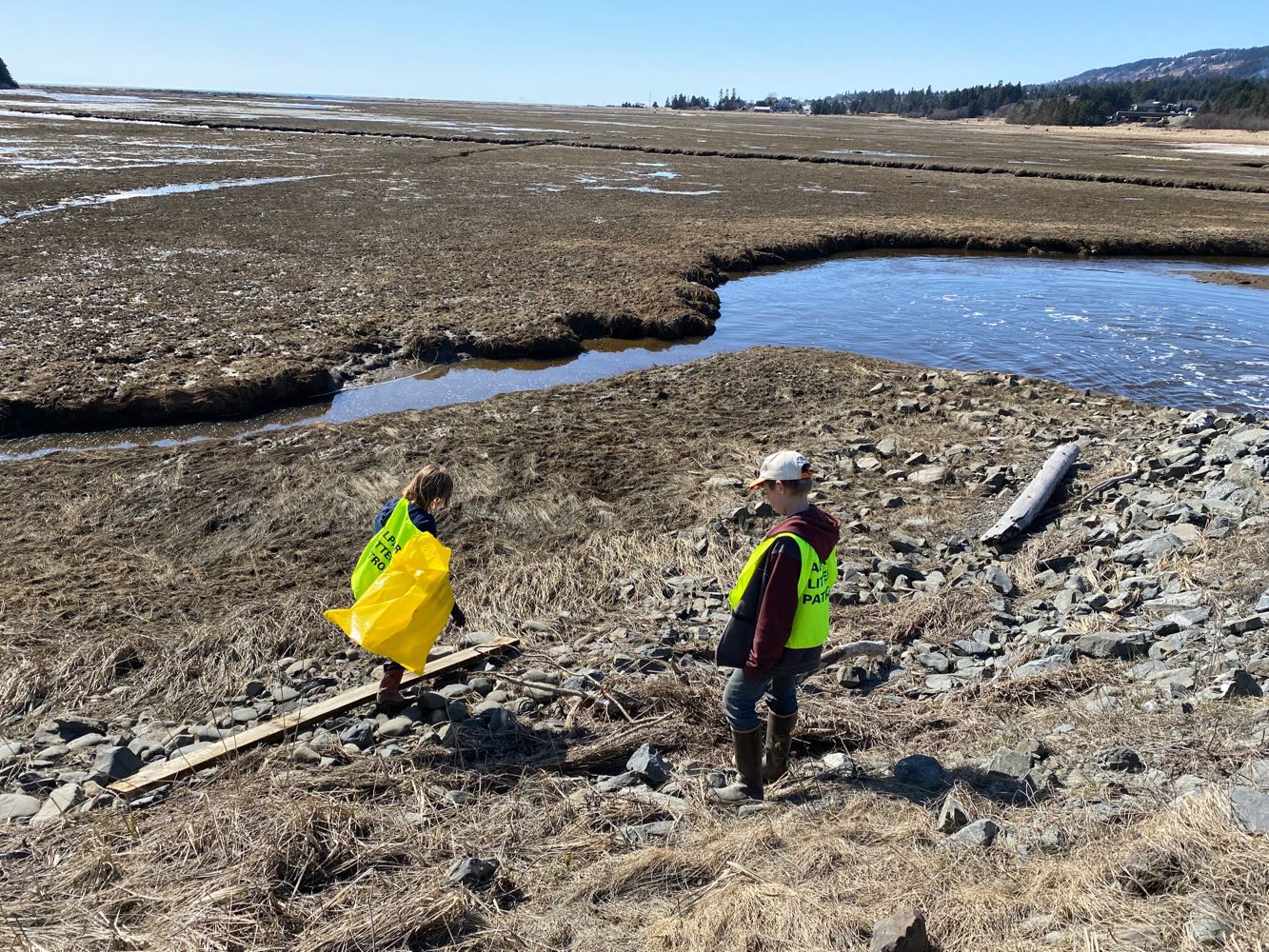
Most of the trash we picked up was plastic, and it really got me thinking about ways I can further reduce the amount of plastic I use.
All this plastic trash goes into plastic bags to be put in a landfill (in nature) to sit there for eternity. Just so we can have the convenience of single servings of string cheese or granola bars. Juice or water to go. Or tacos to-go.
It just isn't right.
Most of this stuff that comes wrapped in plastic isn't good for us anyway. Even water that has been sitting in a flimsy plastic wat...
Creating a Food Culture
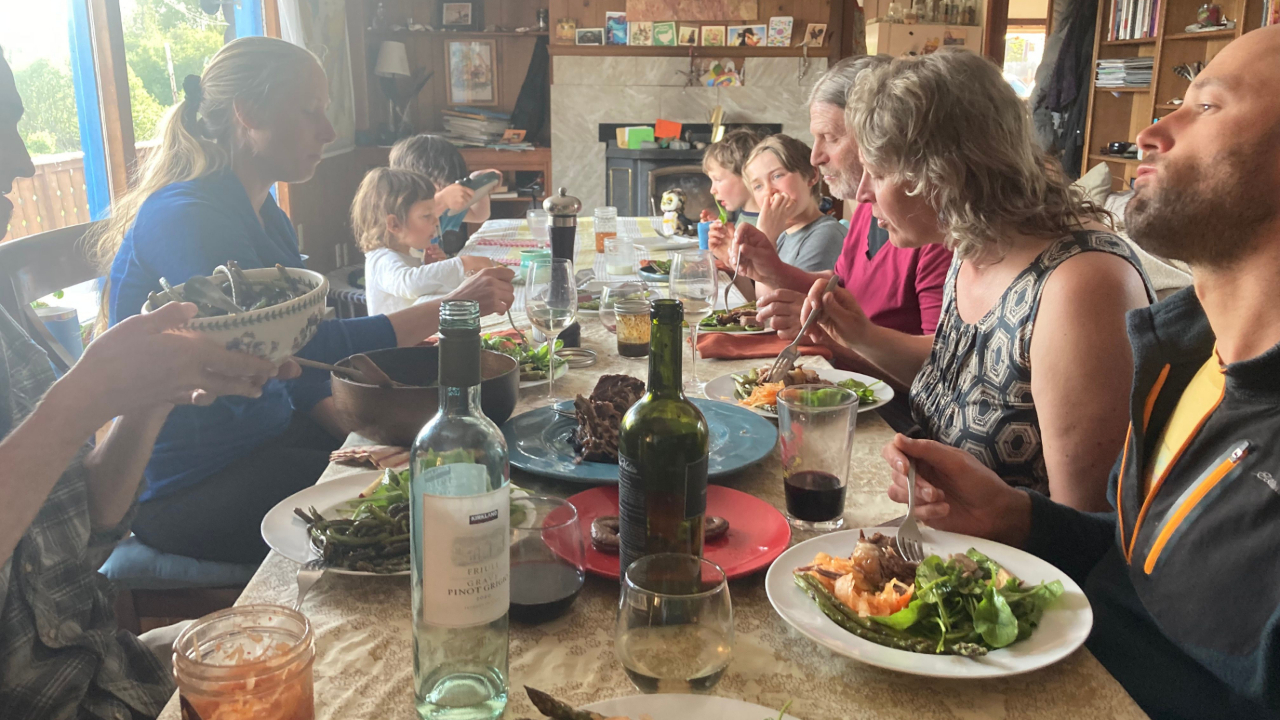
Are you picky about the food you eat?
Or do you just eat anything that is put in front of you?
Do you select food that is fresh and flavorful? Food that makes your body feel good?
Or do you go for immediate gratification? Salty, sweet, or crunchy?
Do you really taste the food you eat or are you just trying to fill your belly, or some other need?
These are not rhetorical questions. I'm sure you fall somewhere in-between. But reflecting on where you fall can give you greater awareness of it.
I have this huge crush on French food culture. I just really love how they approach food, and I wish that we could create a similar culture here in the states.
They really value fresh, wholesome food. They cook real meals with a beginning, middle, and end and sit down with their families to eat. They insist on real food in their daycares and schools. They pay attention to flavor and texture when planning their meals. They value top quality ingredients. And they really enjoy their food.
For the French, meals are an important part of the day, not just putting gas in the tank.
In my own life I am trying to cultivate this same reverence for good food. I put loads of time and energy into growing and preserving my own fresh vegetables. I go out of my way to get fresh, raw milk from a farmer friend a few miles away. I spend time planning and cooking fresh food for the boys and me. I make all our own yogurt, tortillas, bread, bone broth, and more. I share food with friends on a regul...
It's time to turn away from pesticides

13 Reasons Every Child Should Learn Ecological Gardening
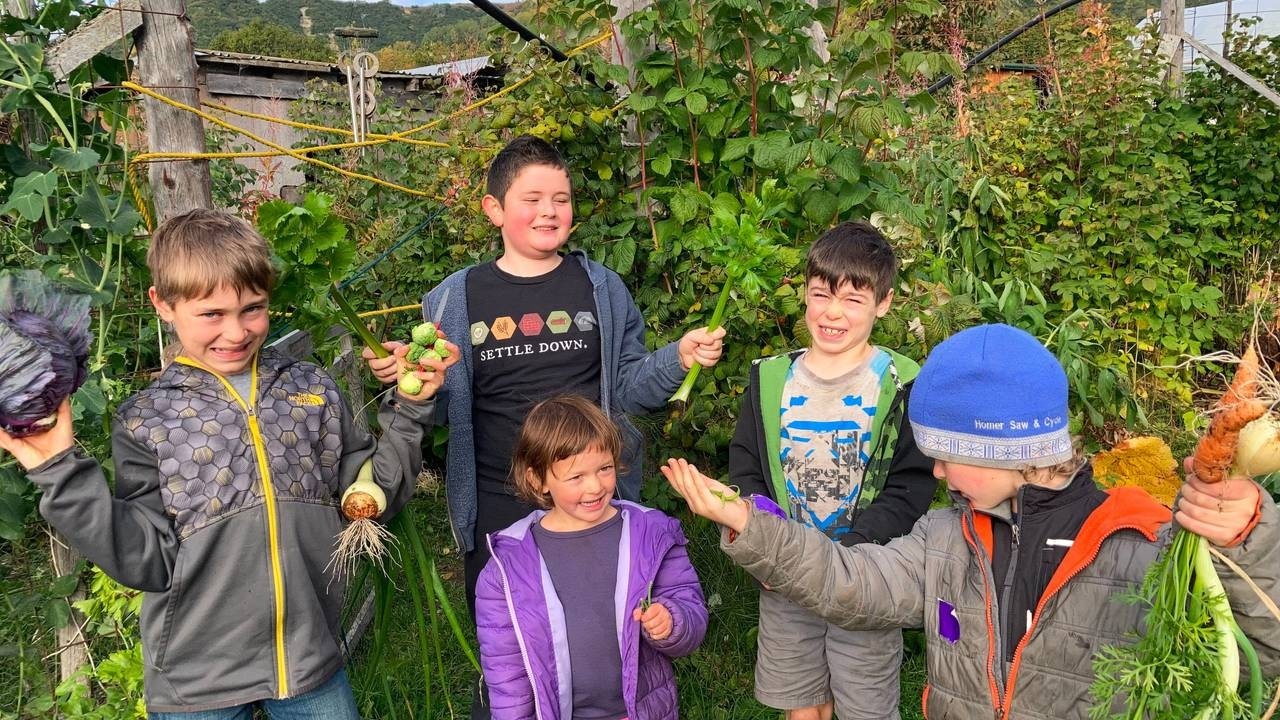
I had a teacher in Pennsylvania sign up for my Green Thumb Course the other day. He's teaching gardening to an ecology class but he is neither an ecologist nor a gardener, which is why he signed up for my course.
I am beyond excited to guide him as he teaches this supremely important subject and skill to his class.
It is truly one of the most important skills kids can learn for the health of their future and the planet.
Here's 13 reasons why.
1. Children learn that they are a part of nature, not separate from it. What happens to nature happens to themselves. Everything is connected and there are no "bad" guys in nature.
2. Children learn to nurture nature and build soil, and are able to grow food anywhere from scratch.
3. Children are connected to the cycles of the seasons, birth, growth, death, and rebirth are all equally valuable and important.
4. Children are empowered by providing food for their class or family.
5. Children are grounded by their connection to the earth, providing stability in an unstable world.
6. Children absorb beneficial microbes from the soil through their contact with the soil and through eating the raw vegetables, healing their guts and helping them be healthier.
7. Children are more likely to eat food they have grown themselves, and are exposed to new vegetables they may not have eaten before.
8. Children release stress and anxiety through gardening.
9. Children appreciate good quality food and what it takes to grow it.
10. Ch...
Growing Garlic

Building
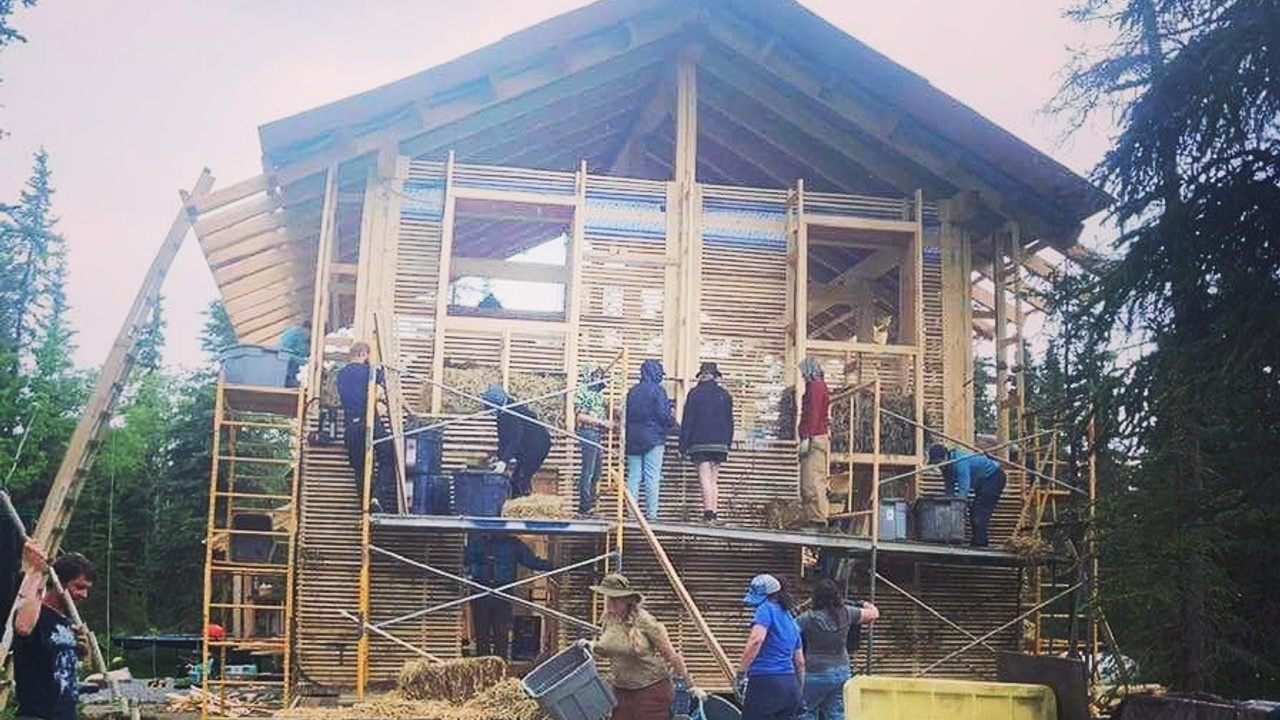
This weekend the boys and I attended a natural building workshop at a small intentional community near us called Ionia.
It was the first workshop put on by the new Ionia Folk School offered completely in the spirit of the gift. They did not ask for money or "donations" of any kind.
There is so much I loved about this.
We were invited to participate in their community. Camp in their field. Eat meals with them. Make ourselves at home.
A community member gave us a wonderful tour of their space. They taught us about building with light clay slip. And we helped them build a massive wall of a house.
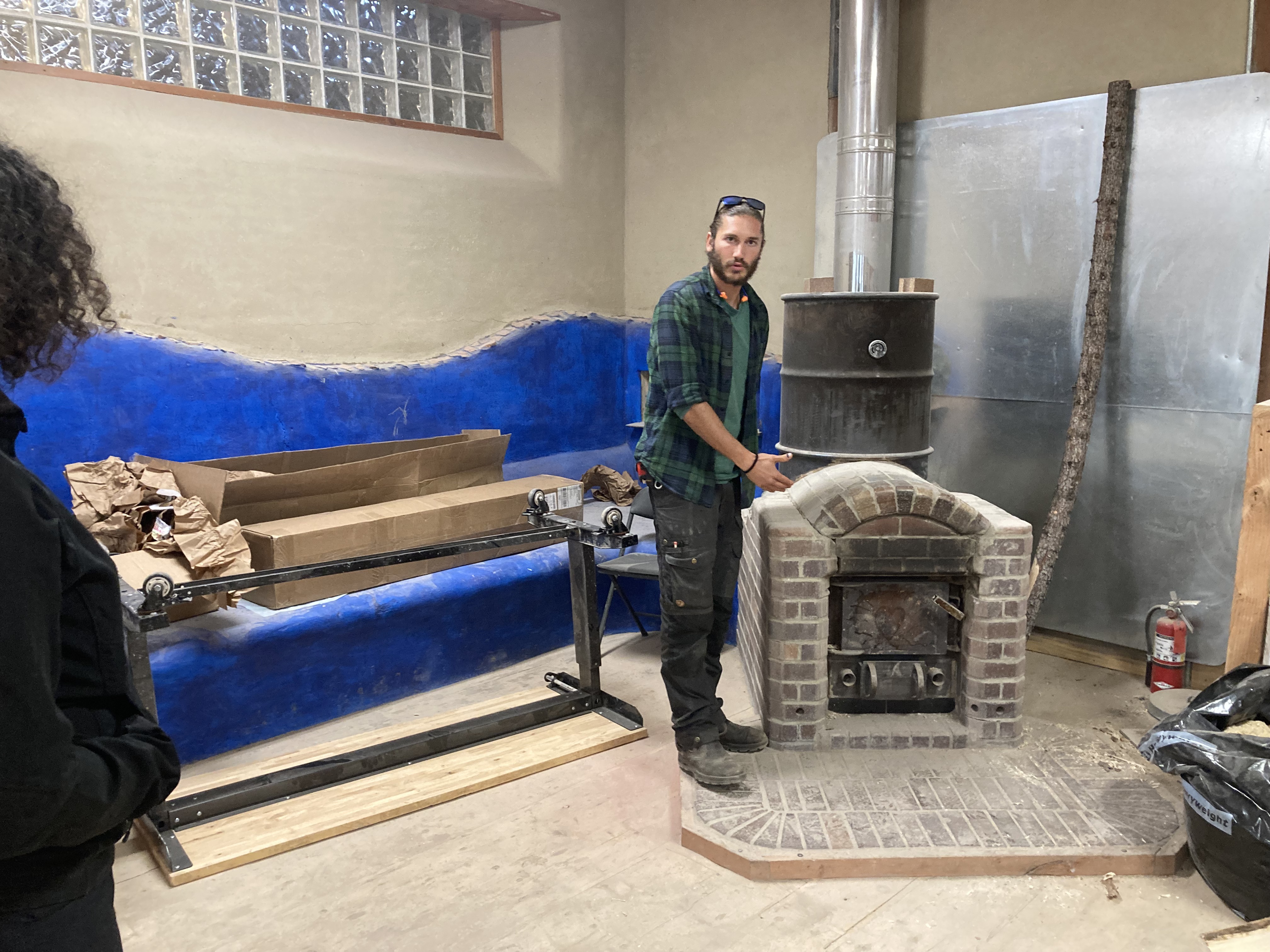
It was a beautiful exchange of energy, knowledge, and willing hands.
I knew some of the participants. There was Leah, who took my course 7 or 8 years ago, and her dad, Will. There was my friend Angelina, another single mom interested in community and building a good life. I met Ivy and Jason at a Permaculture gathering some time ago. And Mariyam had actually stayed in my house one time when we were gone in Anchorage.
I met new people too. Sherry and her teenage daughters. David and his brother from Portugal. Lovely Amy who came with Angelina. And enthusiastic Sue.
Gregory and his brother Jimmy, whose house we were working on were leading the project. Jimmy's wife made sure we had snacks and water and their 3 young children made frequent appearances on the building site.
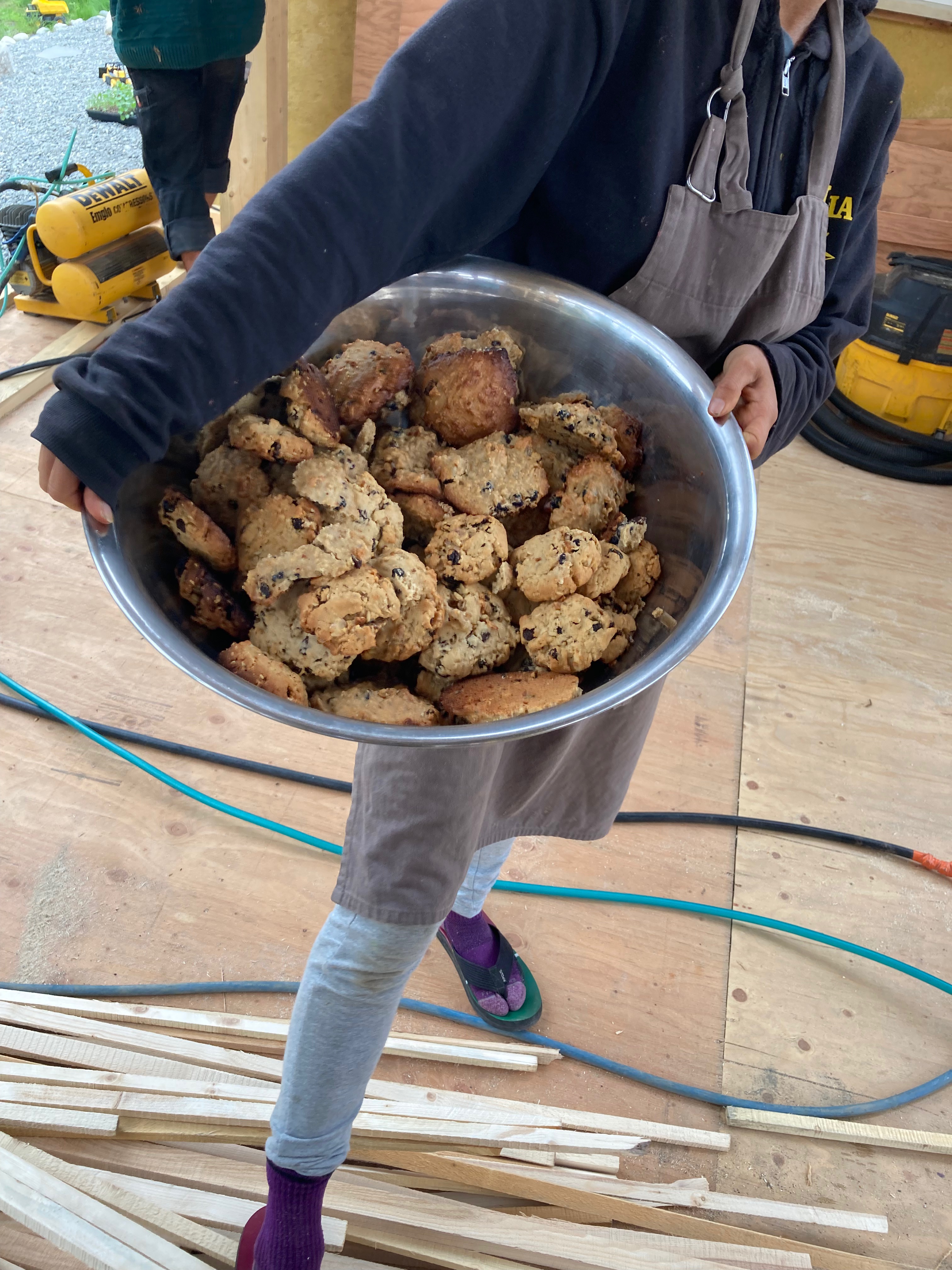
As we worked, we fell into a rhythm. Everyone had a part to play and became an essential part of...
Do you Love Strawberries?
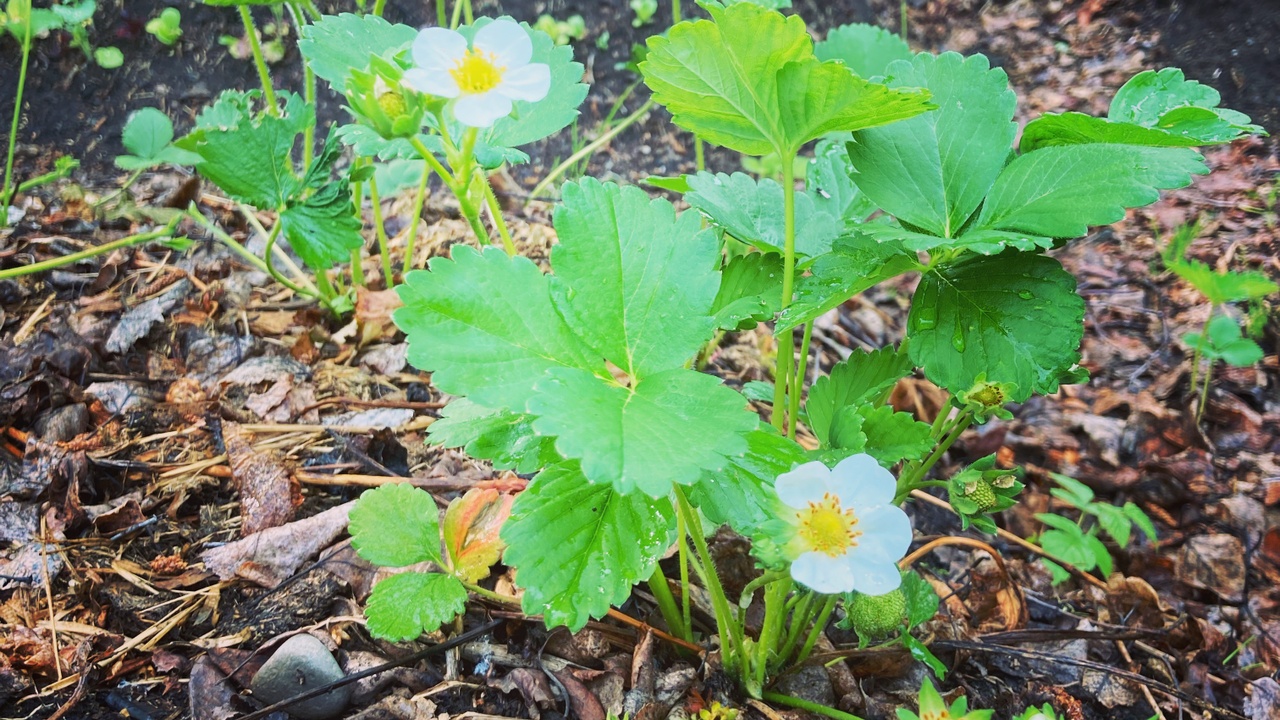
Is there anything better than fresh strawberries?
In Alaska we have to wait a bit longer up for them to ripen and it's HARD!!
It’s SUPER tempting to buy the strawberries from the store that come from warmer climates.
But I don’t.
Here’s why.
They are loaded with chemicals.
Strawberries are the number one fruit or vegetable for pesticide residue according to the Environmental Working Group because their thin skins soak them up like a sponge.
Organic strawberries can also be high in pesticides that drift over from the conventional fields next door, plus they are sky high in phthalates from the black plastic mulch the farms use to keep down the weeds.
Then the farms often till the plastic into the soil, creating millions of micro plastics which the plants take up and are ingested by unsuspecting consumers.
These gorgeous gifts from nature are now packets of toxins for your body.
Not to mention they come in plastic containers that will exist forever in the landfill.
No, thank you.
I will wait patiently for my strawberries to ripen slowly in the northern sunshine.
They will taste even sweeter when they get to my mouth. Warm from the sun and highly anticipated.
This is one of the easiest crops to grow yourself. Strawberries take minimal care and produce delicious berries year after year.
PLUS their leaves are edible and medicinal! You can't buy these in the store...
Strawberry leaves are loaded with vitamins, minerals, and antioxidants. They help with digestive and...
8 Early Greens You Will Never Have to Plant Again
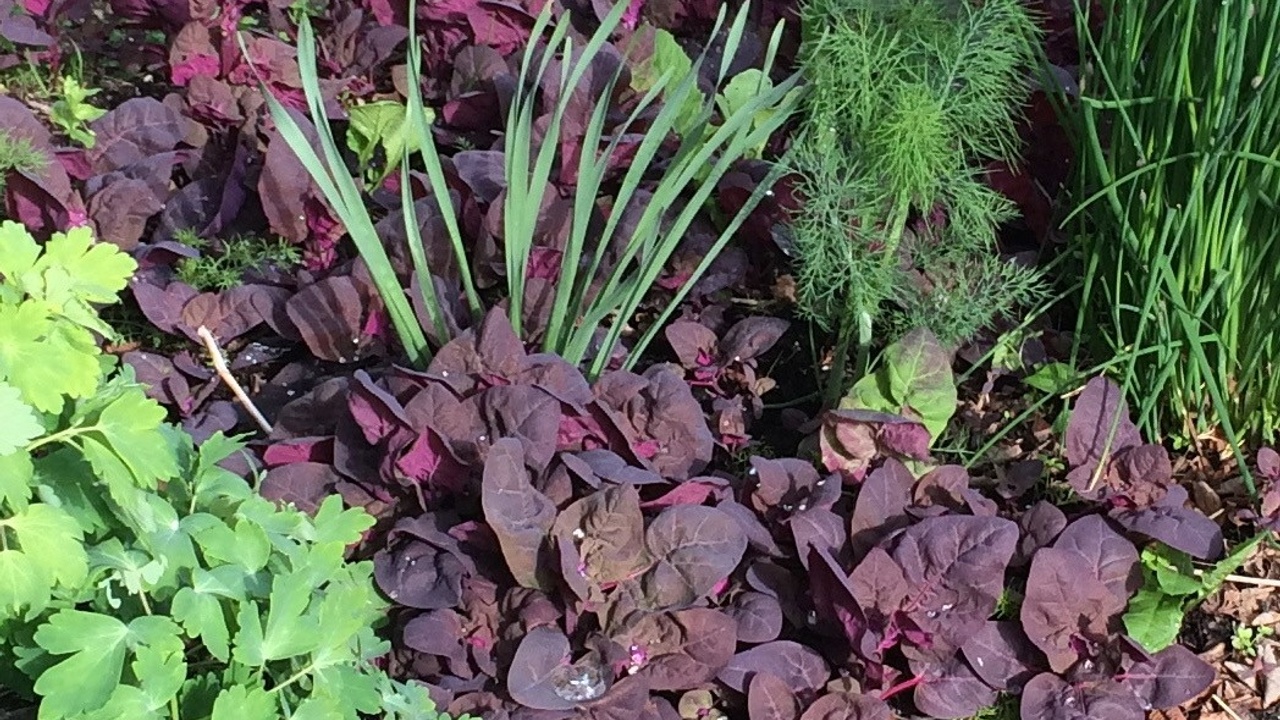
After a long, cold winter of eating from the cold storage and the freezer, nothing tastes better than a fresh salad. Greens are my tonic, giving me energy and vitality. I eat salads lunch and dinner and throw greens into quesadillas, soups, eggs, and more.
I always plant an early crop of hearty greens. The beauty is that these greens can withstand freezing so you do not need to wait until the danger of frost has passed. This year due to the early thaw I planted some greens on the south side of the house in February. The ground was still frozen underneath, but the hearty greens and the lettuce still came up.
But the older I get, the more I appreciate food that I don’t have to sow. I have several varieties of perennial greens as well as some self-seeding annuals. These are brilliant because they come up whenever they are ready. You don’t have to stress about planting them at the right time, or at all. They just take care of themselves. You probably already have some of these in your garden, and right now is the perfect time to plant the ones you don’t have.
- Orach. Red, purple or green, orach is a relative of spinach and self-seeds readily in the garden. It has a very mild flavor and can be eaten fresh or cooked. The purple variety looks awesome in salads, and the green variety can be used as a straight-up substitute for spinach.
- Lamb’s-quarter. Another relative of spinach, you most likely already have this green in your garden. Also known as goosefoot or fat hen, ...
